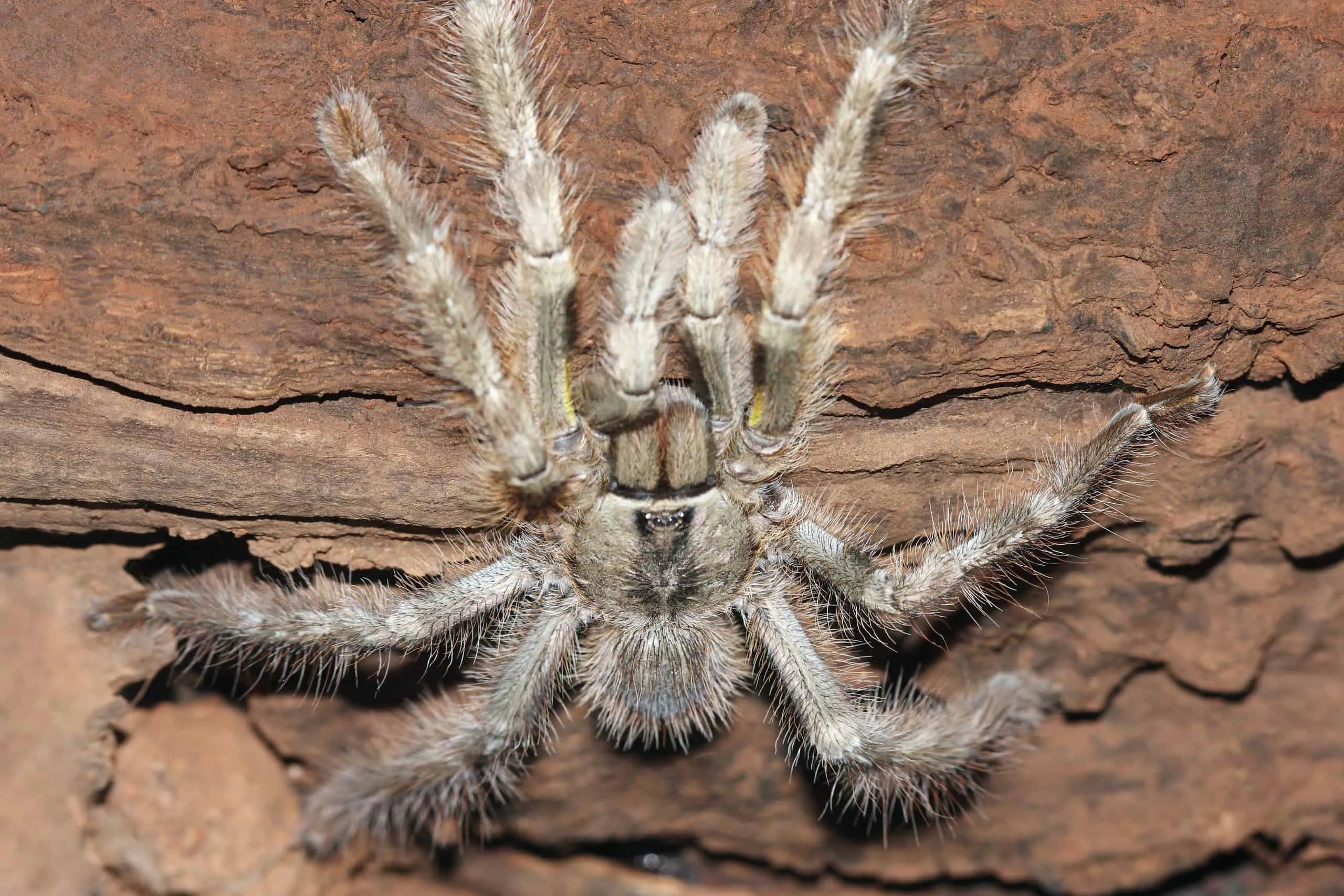Tarantula Fasting Top 5 Facts
Tarantulas, with their captivating appearance and intriguing behaviors, have become popular pets for many. One of the most common questions among tarantula owners concerns their feeding habits and, specifically, how long they can survive without food. The answer to this question is complex, depending on a variety of factors. Understanding the fasting capabilities of tarantulas is crucial for responsible pet ownership, ensuring the health and well-being of these fascinating creatures. Here are the top 5 facts about tarantula fasting. This guide delves into the science behind tarantula metabolism, the factors influencing their ability to go without food, and practical advice for owners.
Understanding Tarantula Metabolism
Tarantulas, as arthropods, have a unique metabolic rate compared to mammals. Their metabolism is directly influenced by environmental factors, particularly temperature. When the temperature drops, their metabolism slows down significantly, reducing their need for food. Conversely, in warmer environments, their metabolism speeds up, increasing their appetite and energy consumption. Tarantulas have adapted to survive periods of food scarcity in their natural habitats. Their bodies are designed to conserve energy, which allows them to go for extended periods without eating. This adaptation is a key aspect of their survival, making them well-suited to endure irregular feeding patterns, a critical aspect of understanding how long they can live without food.
Factors Affecting Fasting Duration
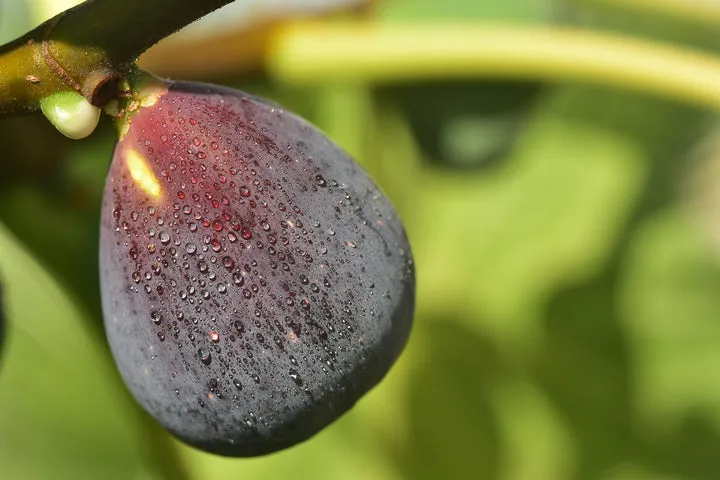
Several factors influence how long a tarantula can survive without food. These factors interact to determine an individual tarantula’s ability to endure fasting. These include size and species, age and health, and environmental conditions. Understanding these elements is crucial for providing proper care and avoiding unnecessary worry about your pet’s well-being. Proper monitoring and environmental control are essential to ensuring the health and longevity of your tarantula. It is essential to consider all these factors, the tarantula’s ability to live without food will vary from one individual to another.
Size and Species
Generally, larger tarantulas can survive longer without food than smaller ones. This is because they have a larger body mass, which translates to more stored energy reserves. Some species are naturally more resilient to periods of food scarcity. For example, terrestrial species often exhibit a higher tolerance for fasting compared to arboreal ones, which tend to have a faster metabolism. Different species have different metabolic rates and adaptations. Choosing the right species for your lifestyle is important. Always research the specific needs of the tarantula you intend to keep, including its feeding habits and fasting capabilities, will help you provide optimal care.
Age and Health
Younger, growing tarantulas have higher metabolic rates and require more frequent feeding compared to adults. They are therefore less tolerant of prolonged fasting. The overall health of a tarantula plays a crucial role in its ability to endure food scarcity. A healthy tarantula will have greater energy reserves and a more robust immune system, allowing it to withstand periods without food better than a sick or stressed one. Regularly monitor your tarantula for any signs of illness or stress, and consult with a veterinarian experienced in exotic animals if you notice any concerning symptoms. Proper care and a healthy environment are key to ensuring your tarantula’s ability to cope with periods of fasting.
Environmental Conditions
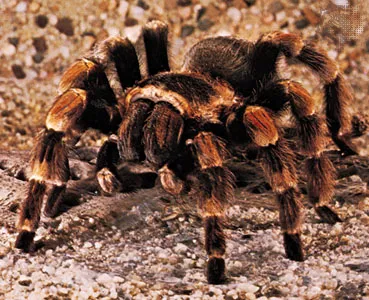
Temperature and humidity levels significantly affect a tarantula’s metabolism and, consequently, its need for food. Cooler temperatures slow down their metabolism, reducing their energy expenditure and allowing them to survive longer without eating. Higher humidity can also influence their ability to conserve water. Maintaining optimal environmental conditions is, therefore, a key aspect of their overall well-being and fasting capabilities. Be sure to monitor the environment using a thermometer and hygrometer and adjust the conditions as needed to ensure your tarantula is comfortable and healthy, regardless of its feeding schedule. A stable, appropriate environment helps them adapt better to periods without food.
Tarantulas’ Remarkable Adaptations
Tarantulas have several remarkable adaptations that enable them to survive for extended periods without food. Their ability to conserve energy is a primary factor. They can slow down their metabolism and reduce their activity levels to minimize energy expenditure. They store energy reserves in their bodies, primarily in the form of fat, which they can utilize when food is scarce. The exoskeleton, which is a tough, external covering, helps them to retain moisture, preventing dehydration during periods of fasting. These adaptations work together to make them incredibly resilient and well-suited to their natural habitats. It is essential to understand the adaptations to appreciate the tarantula’s ability to survive.
Survival Strategies of Tarantulas
Tarantulas employ several strategies to survive during periods of food scarcity. They are masters of energy conservation, slowing down their metabolic rate and reducing their physical activity. They retreat to their burrows or hiding places, minimizing their exposure to the elements and conserving energy. These behaviors allow them to make the most of their stored energy reserves and extend their survival time. Understanding these strategies is important for providing appropriate care and avoiding unnecessary stress on your pet. Knowing how they adapt will improve your understanding of their well-being.
How Tarantulas Conserve Energy
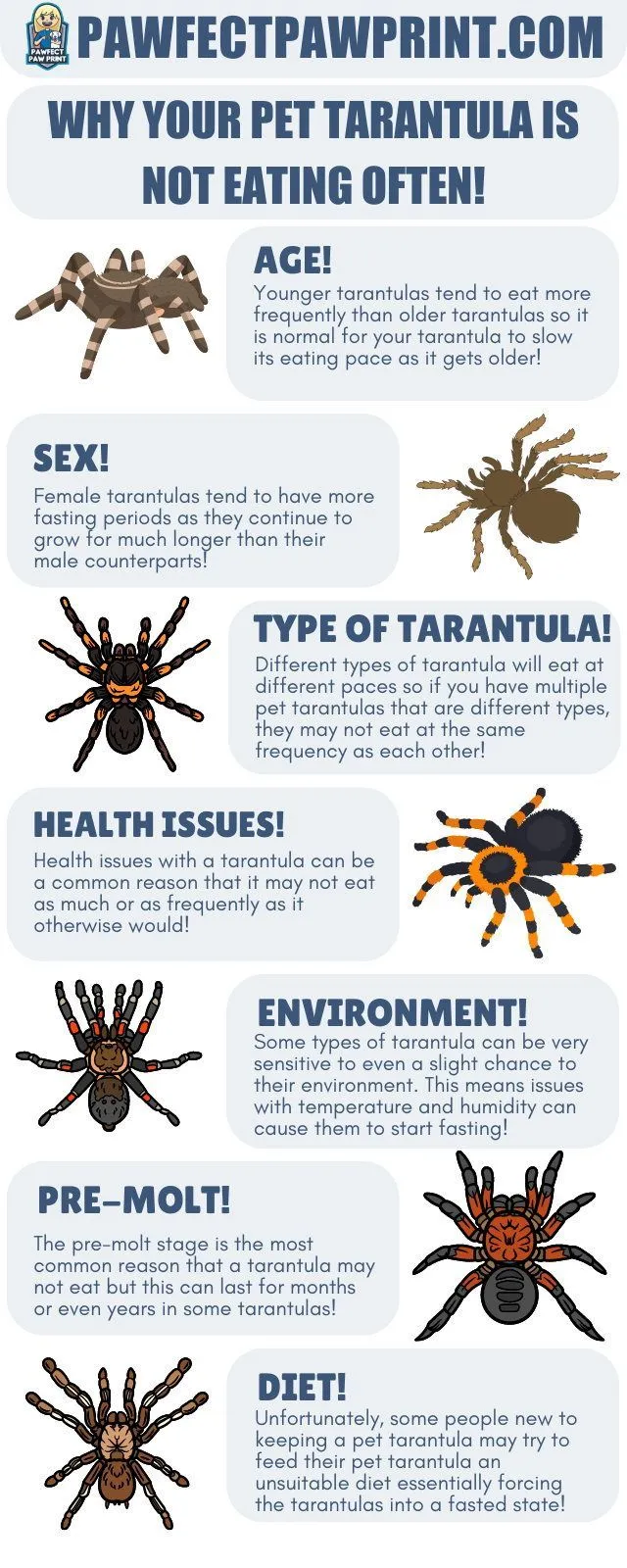
Energy conservation is key to a tarantula’s survival during fasting. They slow down their metabolism, which reduces the amount of energy needed to function. This lower metabolic rate decreases their need for food. Tarantulas become less active, spending more time resting and conserving energy. They move less, which minimizes their energy expenditure. These adaptations allow them to survive for extended periods without eating. By understanding how tarantulas conserve energy, you can better appreciate their resilience and ability to adapt to challenging conditions. Always make sure to keep the environment at its optimum settings to allow for greater energy conservation.
Dehydration and Its Impact
Dehydration is a significant threat to tarantulas, especially during periods of fasting. They need access to water to stay hydrated and maintain their bodily functions. Lack of water can lead to serious health problems, and even death. The exoskeleton helps to retain moisture, but it is not a perfect barrier. Always ensure a constant supply of fresh water, especially when a tarantula is not eating. Monitoring your tarantula’s hydration levels is essential to ensuring its well-being, especially when it is not eating. Keep the humidity at the right level to prevent dehydration.
Signs Your Tarantula Needs Food
While tarantulas can survive for long periods without food, it is important to recognize the signs that indicate they need to be fed. These signs can help you ensure that your pet remains healthy. If your tarantula is showing any of these signs, you should offer food. Changes in behavior are a good indicator of a need to eat. Watch out for restlessness, pacing, or an increased willingness to come out of hiding. These behaviors can indicate hunger. Monitor the abdomen for signs of shrinking. A tarantula that is not eating for a long time may start to show a smaller abdomen as it consumes its stored fat reserves. Look for a loss of weight. Over time, a lack of food will cause the tarantula to lose weight. Always consult with a veterinarian experienced in exotic animals if you are concerned about your tarantula’s health or feeding habits.
Feeding Schedules and Practices
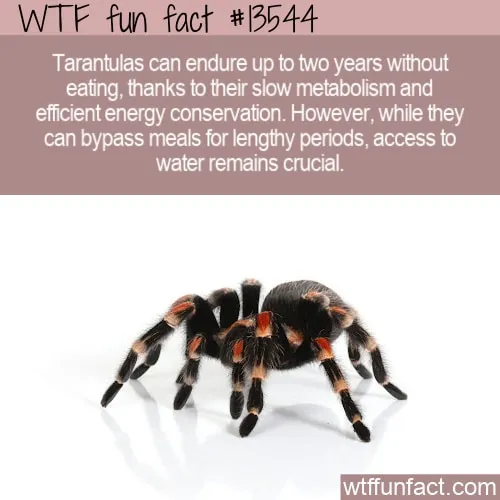
Establishing a proper feeding schedule and practicing good feeding habits are essential for ensuring the health and well-being of your tarantula. The frequency of feeding and the type of food provided will affect its overall health and lifespan. Feeding your tarantula properly is key to its well-being. Developing a schedule and understanding the appropriate foods are the first steps to responsible pet ownership. It will ensure they thrive in their captive environment.
Frequency and Amount of Food
The frequency of feeding depends on the age and species of your tarantula. Younger tarantulas typically need to be fed more frequently, sometimes several times a week, while adult tarantulas can often be fed less often, perhaps once or twice a week. The amount of food offered should be appropriate for the size of the tarantula. Provide enough food for it to consume within a reasonable time, such as overnight. Do not overfeed. This is an easy way to ensure that your tarantula is getting enough to eat without the risk of overfeeding. Always adjust your feeding schedule and the amount of food offered based on your tarantula’s individual needs, its behavior, and its overall health.
What to Feed Your Tarantula
Tarantulas are primarily insectivores, meaning their diet consists mainly of insects. Crickets, mealworms, and roaches are common choices. The best food will vary from species to species, so always research the specific requirements of your tarantula. The size of the insects should be appropriate for the size of your tarantula. Insects that are too large can be a challenge to capture and consume. You can also offer commercially available tarantula food, but always ensure it meets the nutritional needs of your pet. Variety in the diet helps to ensure that your tarantula receives a wide range of nutrients. Always use commercially-raised insects to reduce the risk of parasites or pesticides, which are bad for the tarantula.
Importance of Fresh Water

Providing fresh, clean water is essential for your tarantula’s health, regardless of its feeding schedule. Water is essential for hydration and it is vital for their survival. Always have a shallow water dish available in the enclosure. Refill it regularly, as it can evaporate or become contaminated. Ensure that the water dish is shallow enough to prevent drowning. Also, keep the water dish clean, as it can become a breeding ground for bacteria. Keep a watchful eye over your tarantula’s environment. Ensuring that it has water will help your tarantula thrive.
Interesting Facts About Tarantula
Tarantulas are fascinating creatures with unique adaptations that enable them to survive in various environments. Their ability to endure extended periods without food is just one aspect of their remarkable biology. Their lifespan can vary significantly depending on the species, with females often living much longer than males. They are not aggressive and will often try to run away. When threatened, they will flick hairs, which are an irritant. The more you learn about these amazing arachnids, the more you will appreciate the importance of providing the best care.
